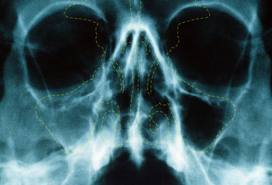The 15th annual Oral, Head and Neck Cancer Awareness Week occur April 22-28, 2012 . This weeklong series of events is aimed to educate the public about these potentially life-threatening but eminently treatable cancers and to promote prevention, screening and early detection. It is highlighted by the free screenings and related activities held at participating medical centers across the country. The screenings are quick, painless, and designed to advance early diagnosis, which can lead to better outcomes. The locations of the free screening sites are available at the Head and Neck Cancer Alliance internet site which also sponsors the event.
Some signs and symptoms include:
According to the American Cancer Society, an estimated 40,250 new cases of cancer of the oral cavity and throat, and an estimated 7,850 deaths from these cancers, are expected in 2012.
Most oral cancers arise on the lips, tongue or the floor of the mouth. They also may occur inside your cheeks, on your gums or on the roof of your mouth.
Some signs and symptoms include:
· A sore in your mouth that doesn't heal or that increases in size
· Persistent pain in your mouth
· Lumps or white, red or dark patches inside your mouth
· Thickening of your cheek
· Difficulty chewing or swallowing or moving your tongue
· Difficulty moving your jaw, or swelling or pain in your jaw
· Soreness in your throat or feeling that something is caught in your throat
· Pain around your teeth, or loosening of your teeth
· Numbness of your tongue or elsewhere in your mouth
· Changes in your voice
· Bad breath
· A lump in your neck
Tobacco (including smokeless tobacco) and alcohol use are the most important risk factors for oral, head and neck cancers, particularly those of the tongue, mouth, throat and voice box. People who use both tobacco and alcohol are at greater risk for developing these cancers than people who use either tobacco or alcohol alone.
Anyone can develop thyroid cancers, although a family history or exposure to radiation is often a factor. Salivary gland cancers do not seem to be associated with any particular cause.
The increase of oral cancer incidence in young adults, a group traditionally at low risk, is attributed to the rise of the human-papillomavirus (HPV), a cancer-causing virus that can be transmitted through oral sex. Currently 70% of oropharyngeal cancers are caused by HPV infection. According to researchers, patients with HPV-positive oral cancers are more responsive to treatment and have better survival rates than HPV-negative patients.



























